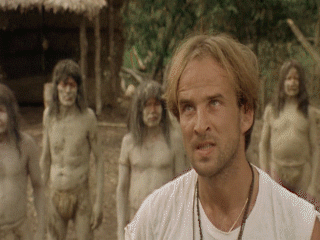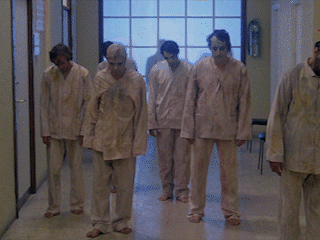Umberto Lenzi’s 1981 film Cannibal Ferox, also known as Make Them Die Slowly, is a controversial and violent exploitation film that centers around the brutal treatment of a group of American students by a tribe of cannibals in the Amazon rainforest. The film is known for its graphic and gory scenes of mutilation, castration, and torture, which have led to it being banned in several countries.
The special effects used in Cannibal Ferox are some of the best for its time and its most famously graphic, the castration of one of the male characters, was achieved through the use of prosthetic body parts. The film also features real animal slaughter, which adds to its brutal and unflinching portrayal of violence.
Despite its reputation for being a “gore-fest,” some critics argue that Cannibal Ferox is actually not as good a film as Lenzi’s prior cannibal film, Eaten Alive. While both films feature graphic violence, Eaten Alive is considered to be a more well-crafted and cohesive film, with a stronger narrative and more developed characters.
In the late 1990s, Cannibal Ferox was remastered and released on laser disc and eventually VHS and DVD by Grindhouse Releasing. The release was a success, and the film received theatrical screenings in some areas, introducing it to a new generation of horror fans.
Despite the controversy surrounding Cannibal Ferox and its graphic violence, the film has garnered a cult following over the years. It is considered a classic of the cannibal genre, and its influence can be seen in the work of many contemporary horror filmmakers.
However, it’s important to note that the film’s depiction of violence and its representation of indigenous people have been widely criticized as exploitative and racist. The film also didn’t receive any critical acclaim or awards.
In conclusion, while Cannibal Ferox is a well-known and influential film in the genre of exploitation horror, it is also a controversial and divisive film due to its graphic violence and depiction of indigenous people. Some consider it as a classic of the genre, while others see it as an overrated and poorly made film. Regardless of personal opinions, it’s undeniable that the film’s impact on the genre and its remastered release in the late 1990s helped to introduce it to new audiences and solidify its place in the horror canon.





